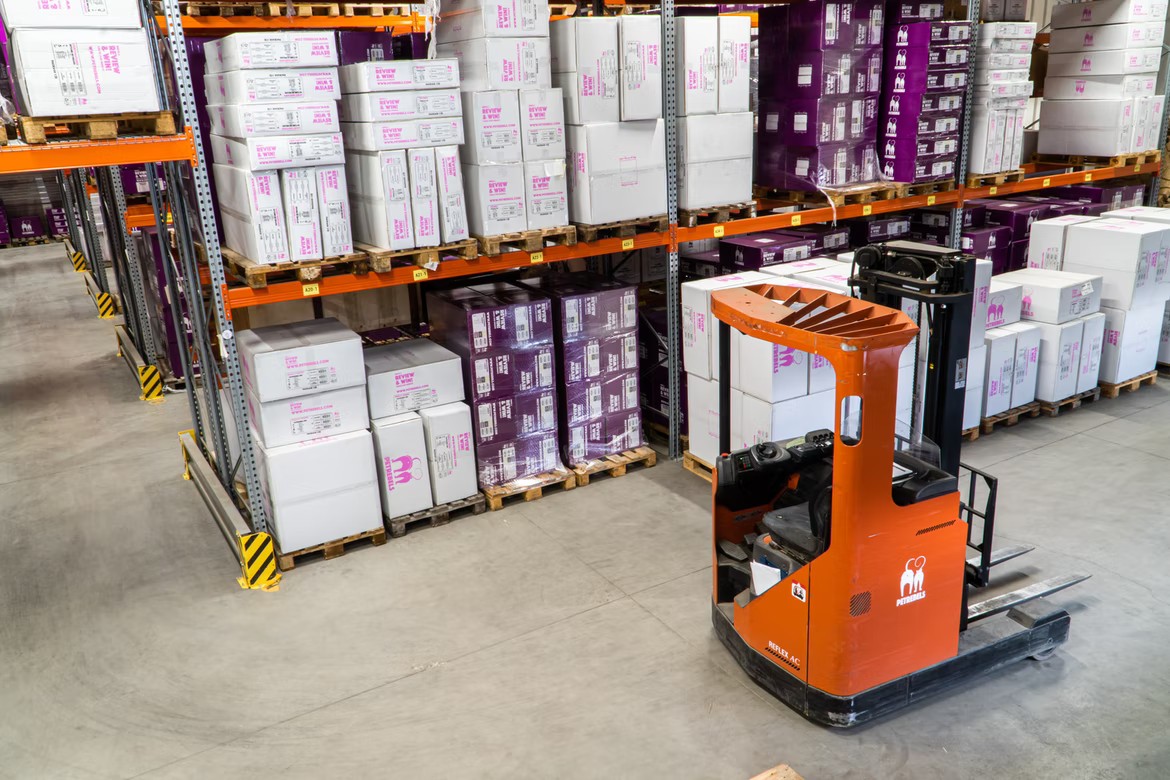In 2022, good inventory management is an essential part of any business. Customer expectations are growing increasingly fast and businesses need to be able to fulfil customer needs quickly and accurately to maintain good throughput.
But inventory management is about more than just fulfilling customer needs quickly; it’s also about reducing waste, minimizing stockouts and improving cash flow. In fact, if done well, inventory management can be the key unique value proposition of a thriving product-based business.
Whether you’re selling products online or through a physical store, logistical challenges can quickly become a roadblock to growth. Effective inventory management can help to overcome these challenges and enable your business to flourish, and has strong implications for effective scheduling and delivery as well.
In this article, we’re going to look at what inventory management is, the benefits it can bring to your business and some tips for getting started.
What is inventory management?
Put simply, inventory management is the process of organising and controlling the stock of goods that a business owns. It encompasses everything from ordering and receiving stock to stocking shelves and tracking stock levels.
Good inventory management is essential for any business that wants to be able to fulfil customer orders quickly and accurately. It can also help to reduce waste, minimise stockouts and improve cash flow.
More specifically, inventory management can be broken down into the following key areas:
- Purchasing: This includes deciding what to order, negotiating prices with suppliers and placing orders.
- Receiving: This includes checking goods against purchase orders, recording quantities and damages and arranging for storage.
- Stocking: This includes organising stock in an accessible and logical manner, ensuring that the correct quantities of each item are available and that stock is rotated.
- Tracking: This includes recording stock levels and tracking sales to ensure that the correct quantities of stock are ordered.
Each of these key areas is essential for a well-run inventory management system. The personnel you hire, the processes you put in place and the technology you use to accomplish each will all depend on the specific needs of your business, and we’ll cover them in detail below.

Optimizing purchasing
The purchasing process is responsible for ordering the right quantities of the right products at the right time. This can be a difficult task, particularly for businesses with a large inventory.
There are a few things you can do to optimize your purchasing process and ensure that you’re getting the most value for your money.
- Know your inventory: The first step in effective purchasing is knowing what you have in stock and what you need to order. This can be done by recording stock levels on a regular basis and tracking sales to ensure that you’re ordering the correct quantities.
- Compare prices: Once you know what you need to order, it’s important to compare prices and find the best deals. This can be done by negotiating with suppliers, using price comparison websites or signing up for a price alert service.
- Order in bulk: When possible, it’s often more economical to order items in bulk. This can be done by working with suppliers to negotiate a discount for large orders or by ordering from a wholesaler.
- Use technology: Technology can be a great help when it comes to purchasing. There are a number of software programs that can automate the ordering process and help you to track prices and stock levels.
Optimizing your purchasing process can help you to save time and money, and it’s essential for any business that wants to be able to fulfil customer orders quickly and accurately.
Optimizing receiving and stocking
The first step in good inventory management is ensuring that you have accurate information on what stock you have and where it is. This starts with receiving and stocking.
When goods are received, they should be checked against the purchase order to ensure that everything is accounted for. Damaged goods should be recorded and the appropriate action taken, such as returning the items to the supplier. Quantities should also be recorded and compared to the purchase order to ensure that everything is correct.
Goods should then be arranged in an accessible and logical manner. This will depend on your business, but common methods include grouping items by category or type, by supplier or by date of arrival.
It’s also important to ensure that the correct quantities of each item are available. This can be done by tracking sales and ordering stock based on past sales patterns. This will help to prevent stockouts and ensure that customers can always find what they’re looking for.
Optimizing tracking and ordering
Once you have accurate information on what stock you have and where it is, the next step is to optimize tracking and ordering. This involves tracking stock levels and sales to ensure that the correct quantities of stock are ordered.
It’s important to track both current and projected sales when ordering stock. This will help to ensure that you have enough stock on hand to meet customer demand but don’t overstock, which can lead to waste.
Tracking stock levels is also essential for preventing stockouts. By keeping track of how much stock is being sold, you can ensure that you’re ordering the correct quantities of stock. This will help to avoid lost sales and keep your business running smoothly.
As mentioned, logistic challenges can quickly become a roadblock to growth for any business. Effective tracking and ordering management can help to overcome these challenges and enable your business to flourish.

Examples of good inventory management
Though many don’t think so, physical, product-based businesses have a few key advantages over online-only businesses.
One of these advantages is that businesses with a physical presence can use their inventory to create a unique selling proposition (USP) aside from the product itself. When done well, good inventory management matches the product directly and can be the differentiating factor between two otherwise identical businesses.
Here are three examples of businesses that use their inventory to create a unique selling proposition:
1. The Apple Store
Apple is well-known for its exceptional inventory management. One of the reasons the Apple Store is so successful is that it has a very limited selection of products. This means that employees can be knowledgeable about every product and can help customers find what they need quickly and easily, and it also significantly simplifies the purchasing process.
In addition, rather than order products from a variety of suppliers, Apple orders products in bulk from a few select suppliers. This allows the company to negotiate better prices and also helps to ensure that products are always available in stock.
2. Lululemon Athletica
Lululemon is another company that is well-known for its exceptional inventory management. One of the reasons Lululemon is so successful is that it manufactures most of its own products. This allows the company to tightly control the quality of its distribution and also ensures that there is always a large selection of products available in stock.
Lululemon also takes a very strategic approach to stocking its shelves. Rather than stocking every size and colour of each product, Lululemon only stocks a select few items in each size and colour. This allows the company to reduce waste and ensure that each item is selling well.
3. In-N-Out Burger
In-N-Out Burger is a fast food chain that is known for its exceptional customer service and its high-quality products. One of the reasons In-N-Out Burger is able to provide such high-quality products is that it only uses fresh ingredients, which it orders daily from local suppliers.
In addition, In-N-Out Burger only has a limited number of items on its menu. This allows the company to focus on quality rather than quantity and also ensures that there is always enough stock of each item.
Each of these businesses uses its inventory to create a unique selling proposition that sets it apart from its competitors. By taking a strategic approach to inventory management, these businesses are able to provide a high-quality customer experience that is difficult for their competitors to match.
Inventory management: final thoughts
Inventory management is an essential part of any business, but it can be especially important for product-based businesses.
By implementing a good inventory management system, you can ensure that your business can fulfil customer orders quickly and accurately, reduce waste, minimise stockouts and improve cash flow.
The key to success lies in finding the right system for your specific business and then putting in place the processes and personnel to make it work. By optimizing purchasing, receiving, stocking, tracking and other aspects of inventory management, you can set your business up for success.
Use these tips to get started on improving your inventory management today!